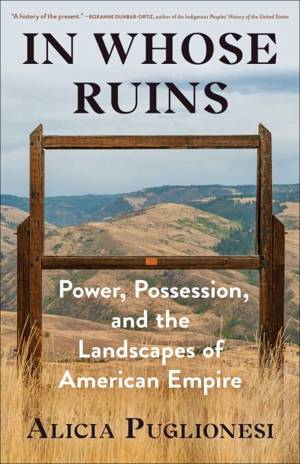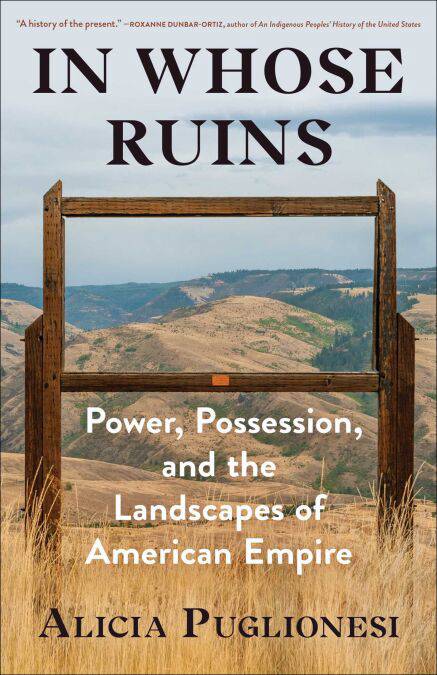
- Retrait gratuit dans votre magasin Club
- 7.000.000 titres dans notre catalogue
- Payer en toute sécurité
- Toujours un magasin près de chez vous
- Retrait gratuit dans votre magasin Club
- 7.000.0000 titres dans notre catalogue
- Payer en toute sécurité
- Toujours un magasin près de chez vous
In Whose Ruins EBOOK
Power, Possession, and the Landscapes of American Empire
Alicia Puglionesi
Ebook | Anglais
16,76 €
+ 16 points
Format
Description
In this “first-rate work of historical research and storytelling” (Kirkus Reviews, starred review), four sites of American history are revealed as places where truth was written over by oppressive fiction—with profound repercussions for politics past and present.
Popular narratives of American history conceal as much as they reveal, presenting a national identity based on harvesting treasures that lay in wait for European colonization. In Whose Ruins tells another story: winding through the US landscape, from Native American earthworks in West Virginia to the Manhattan Project in New Mexico, this history is a tour of sites that were mined for an empire’s power. Showing the hidden costs of ruthless economic growth—particularly to Indigenous people—this book illuminates the myth-making intimately tied to place. From the ground up, the project of settlement, expansion, and extraction became entwined with the spiritual values of those who hoped to gain from it. Every nation tells some stories and suppresses others, and In Whose Ruins illustrates the way American myths have overwritten Indigenous histories, binding us into an unsustainable future.
Historian Alicia Puglionesi “makes a perfect guide through the strange myths, characters, and environments that best reflect the insidious exploitation inseparable from American dominion” (Chicago Review of Books). She illuminates the story of the Grave Creek Stone, “discovered” in an ancient Indigenous burial mound; oil wells drilled in the corner of western Pennsylvania once known as Petrolia; ancient petroglyphs that once adorned rock faces on the Susquehanna River, dynamited into pieces to make way for a hydroelectric dam; and the effects of the US nuclear program in the Southwest, which contaminated vast regions in the name of eternal wealth and security through atomic power, a promise that rang hollow for the surrounding Native, Hispanic, and white communities. It also inspired nationwide resistance, uniting diverse groups behind a different vision of the future—one not driven by greed and haunted by ruin.
This deeply researched work traces the roots of American fantasies and fears in a national tradition of selective forgetting. Connecting the power of myths with the extraction of power from the land itself reveals the truths that have been left out and is “a stimulating look at the erasure and endurance of Native American culture” (Publishers Weekly).
Popular narratives of American history conceal as much as they reveal, presenting a national identity based on harvesting treasures that lay in wait for European colonization. In Whose Ruins tells another story: winding through the US landscape, from Native American earthworks in West Virginia to the Manhattan Project in New Mexico, this history is a tour of sites that were mined for an empire’s power. Showing the hidden costs of ruthless economic growth—particularly to Indigenous people—this book illuminates the myth-making intimately tied to place. From the ground up, the project of settlement, expansion, and extraction became entwined with the spiritual values of those who hoped to gain from it. Every nation tells some stories and suppresses others, and In Whose Ruins illustrates the way American myths have overwritten Indigenous histories, binding us into an unsustainable future.
Historian Alicia Puglionesi “makes a perfect guide through the strange myths, characters, and environments that best reflect the insidious exploitation inseparable from American dominion” (Chicago Review of Books). She illuminates the story of the Grave Creek Stone, “discovered” in an ancient Indigenous burial mound; oil wells drilled in the corner of western Pennsylvania once known as Petrolia; ancient petroglyphs that once adorned rock faces on the Susquehanna River, dynamited into pieces to make way for a hydroelectric dam; and the effects of the US nuclear program in the Southwest, which contaminated vast regions in the name of eternal wealth and security through atomic power, a promise that rang hollow for the surrounding Native, Hispanic, and white communities. It also inspired nationwide resistance, uniting diverse groups behind a different vision of the future—one not driven by greed and haunted by ruin.
This deeply researched work traces the roots of American fantasies and fears in a national tradition of selective forgetting. Connecting the power of myths with the extraction of power from the land itself reveals the truths that have been left out and is “a stimulating look at the erasure and endurance of Native American culture” (Publishers Weekly).
Spécifications
Parties prenantes
- Auteur(s) :
- Editeur:
Contenu
- Nombre de pages :
- 368
- Langue:
- Anglais
Caractéristiques
- EAN:
- 9781982116774
- Date de parution :
- 04-04-22
- Format:
- Ebook
- Protection digitale:
- Adobe DRM
- Format numérique:
- ePub

Les avis
Nous publions uniquement les avis qui respectent les conditions requises. Consultez nos conditions pour les avis.






